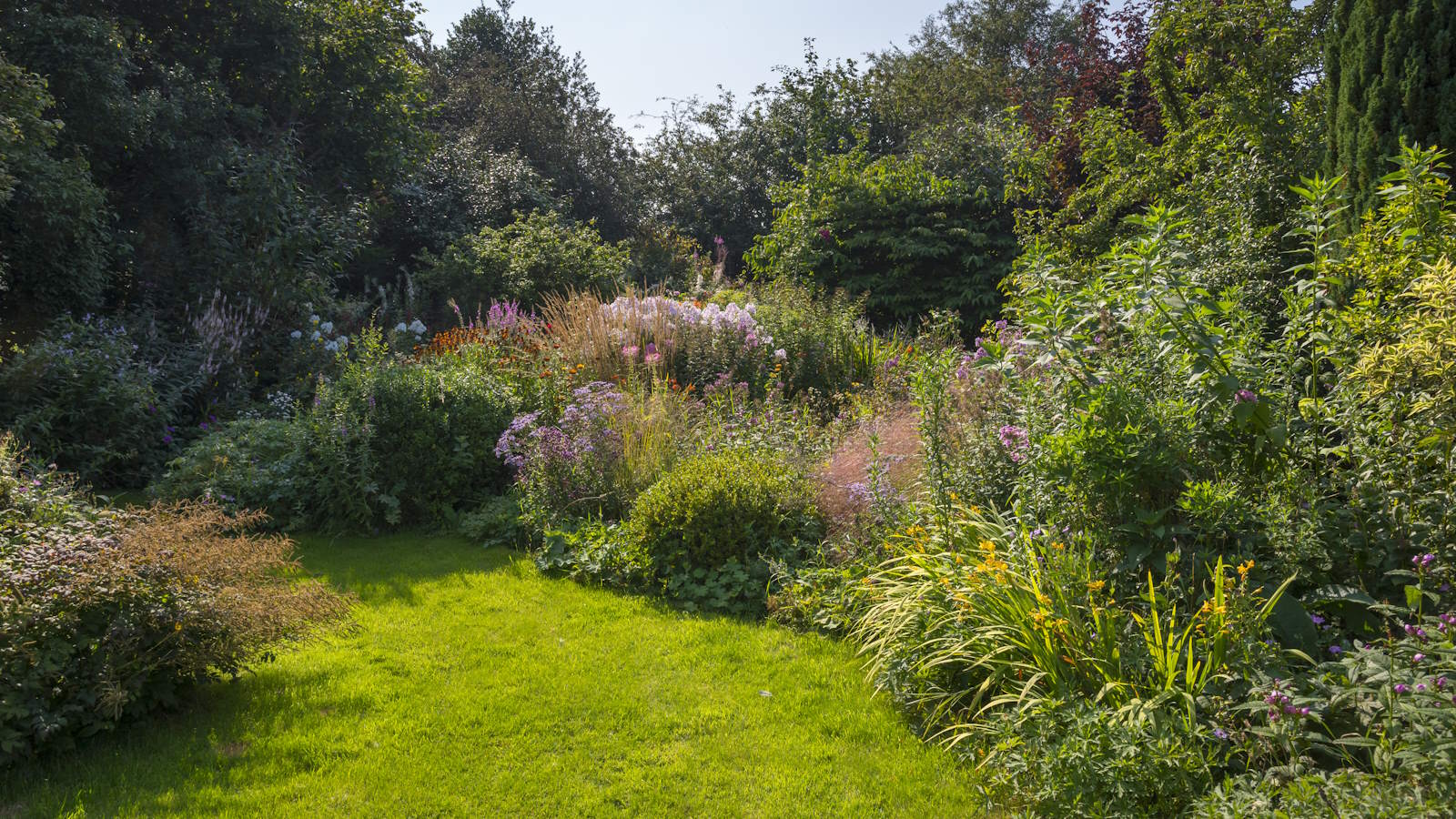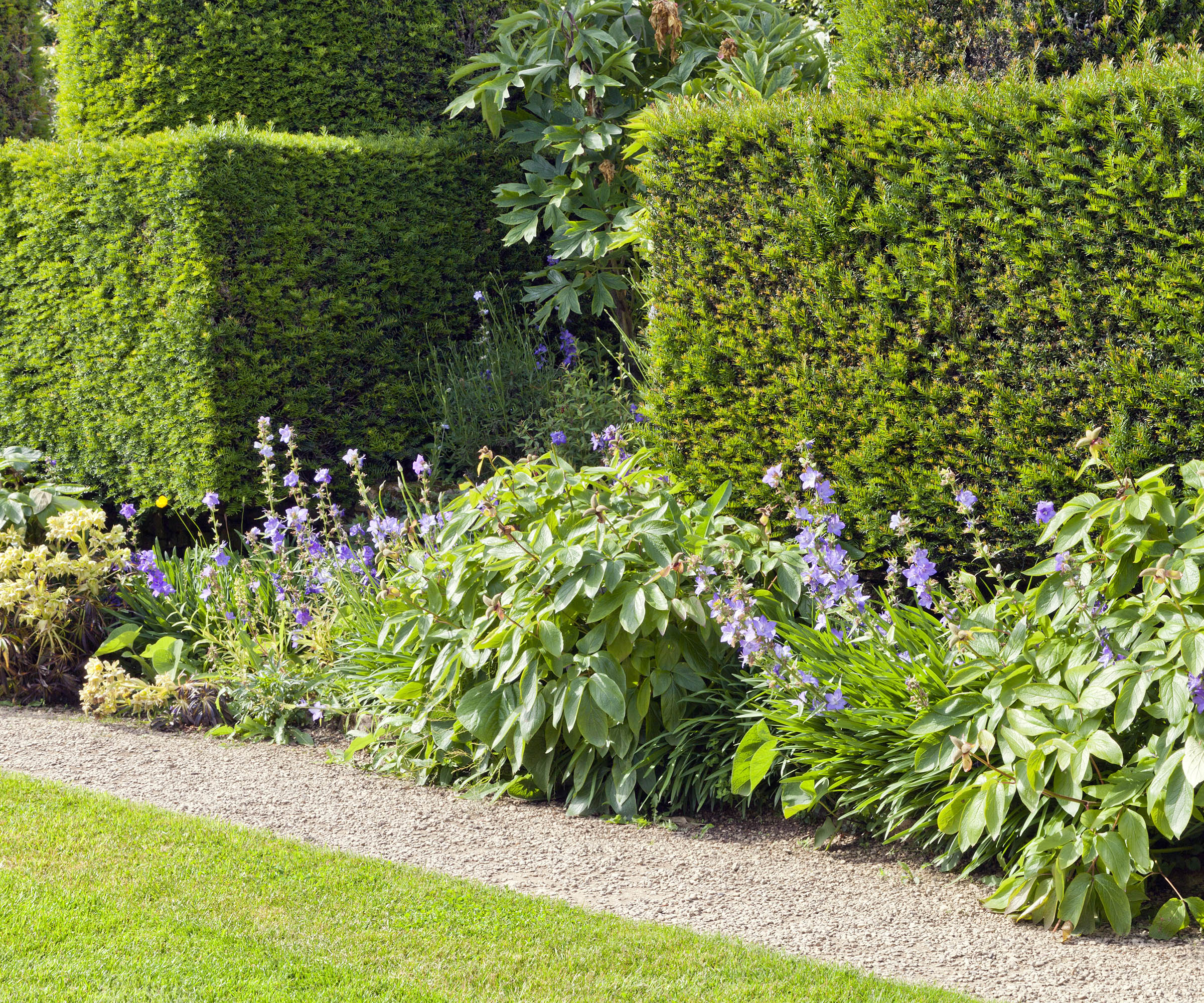
Shrubs are hard-working plants for any backyard. They can add structure, interest, and beauty to any space and fertilizing your shrubs will help keep them looking at their best year after year.
There are preferred times of the year to feed deciduous and evergreen shrubs that feature in your garden ideas to keep them healthy and thriving, and also periods to avoid. Most shrubs will require just one feed a year unless deficiencies are identified.
We reveal tips from plant experts to help you know the right time to fertilize and the best types of feed you should choose to keep your shrubs looking fantastic.

Do shrubs need fertilizer?
Shrubs will benefit from a regular fertilization program. This is especially the case if any essential nutrients are shown to be lacking, through a soil test or from signs of a lack of vigor or a noticeable decline in the overall health of the shrub.
When to fertilize shrubs

Whether they are deciduous or evergreen shrubs, think about nutrients and feeding before you plant shrubs as part of your backyard ideas. Adding some organic matter, such as compost or well-rotted manure, into the site before planting can benefit all soil types and provide goodness to the shrubs as they establish.
The shrubs do not want to be given additional fertilizer for their first year in the ground. This will encourage them to establish a strong root network rather than promote the production of lots of foliage and blooms in that first year.
Once they reach year two, they will benefit from regular feeds annually. The ideal time of year to fertilize shrubs will be early spring, between late February and early April depending on your location.
This is because, as Sydni D'Amico, plant expert at Fast Growing Trees, says: ‘At this time of year deciduous shrubs start to leaf out for the season, and evergreen shrubs start to ramp up on foliage production for the growing season.’ The shrubs are hungry for nutrients during this period of active growth.
Shrubs can also be fertilized in early fall, to store nutrients in the dormant roots ready to support the growth the following year. It is important, however, not to fertilize too late in fall. This will stimulate growth when a shrub wants to be prepared for dormancy.
How often to fertilize shrubs
Applying fertilizer once a year is often sufficient for shrubs to thrive and perform at their best. If you identify any specific nutrient deficiencies in the leaves, multiple applications may be required to solve specific problems.
Such issues can include yellow leaves, which can be an indicator of a lack of nitrogen, or browning leaf edges, which can mean a deficiency of potassium.
How to fertilize shrubs

All fertilizer packaging will feature a series of plant fertilizer numbers that show the make-up of nitrogen (N), phosphorus (P), and potassium (K) in the product, for example, a balanced feed would be marked as 10-10-10. Understanding the NPK ratios on products helps you pick the right plant fertilizer for your shrubs,
There are synthetic products available that are tailored to specific shrubs. Such products are beneficial when feeding those particular shrubs. For example, you can get this specific evergreen tree and shrub food at Amazon or can get tailored rose plant food. However, if you want to use alternatives to synthetic fertilizers there are organic options available.
Sydni D'Amico recommends a fertilizer with an NPK of around 4-1-1 for evergreen shrubs. She says: ‘This ratio is best for evergreen shrubs because it is high in nitrogen, which stimulates foliage growth which is the main focus of evergreens.’ Such organic high-nitrogen products you can use include chicken manure pellets or blood meal.
When it comes to flowering shrubs Sydni advises an NPK ratio of around 1-2-1, adding: ‘This ratio is best for flowering shrubs because it is high in phosphorus, which stimulates more bloom production.’ Some good organic feeds for flowering shrubs include bone meal, rock phosphate, or worm castings.
All fertilizers should only be applied at the recommended rates to avoid issues of over-fertilizing plants. Using pre-measured spikes, such as these tree and shrub fertilizer spikes available at Amazon, can help avoid over-fertilizing and they simply need to be put into the soil around the shrub. If you are spreading granular fertilizer, always make sure to sprinkle it evenly around the base of the plant.
Feeding shrubs is an important task, but can often be overlooked when people’s spring gardening checklist gets longer and longer. However, proper planning, even down to the best time of day to fertilize, will reap the rewards of healthy shrubs and great display.
‘Always feed your plants and shrubs early in the morning or evening when it is cooler out,’ says Laura Janney, owner at The Inspired Garden. ‘Soaking up all those good nutrients takes energy from the plant and we don’t want to have to compete with heat and possibly stress the plants.
‘Also mark your calendar so you can easily keep track of which day and what type of fertilizer to use. Create a relaxing routine of spending a small amount of time caring for your shrubs and stand back to enjoy the results.’
As part of your annual care of shrubs, mulching around plants will help boost moisture retention in the soil and reduce competition from weeds for water and nutrients. Add a layer at least two inches thick of organic matter in spring or fall - compost, well-rotted manure, or leaf mold are ideal options - and keep at least six inches around the stems clear.
Shop organic shrub fertilizers
Use chicken manure fertilizer in spring and fall on trees and shrubs. Ready to use and requires no mixing, Espoma Organic Chicken Manure is approved for organic gardening.
The addition of phosphorus to your soil will promote strong root development, enhance early season growth, and give you superior blossoms and fruit.
Worm castings contain organic material beneficial for all your gardening needs. In addition, worm castings improve soil structure, water retention and drainage.
FAQs
Is tomato feed good for shrubs?
Fertilizer designed for growing tomatoes is high in potassium and useful for promoting the development of flowers. Such a feed would be beneficial if you are growing flowering shrubs in containers to provide color and texture to a small backyard. Apply liquid tomato feed when you water plants every 2-3 weeks during the flowering season.
When you transplant a shrub, add organic matter or bone meal into the new planting hole to help the shrub re-establish. Alternatively, adding some mycorrhizal fungi, available at Amazon, can also help the shrub develop roots and bed into its new home.







